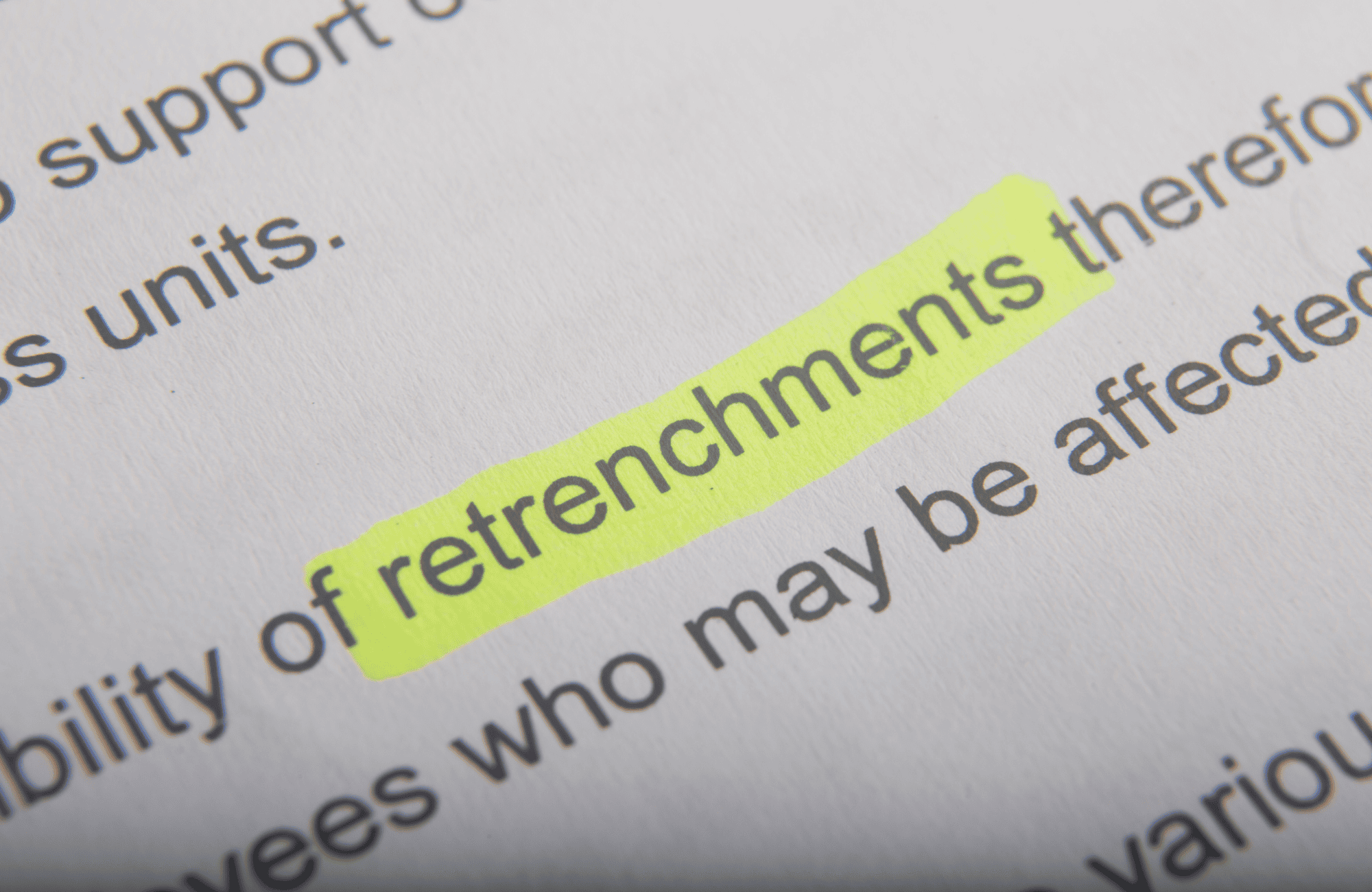In today’s business climate, companies are often forced to restructure, downsize, or shut certain operations due to economic pressures, automation, or market shifts. In such scenarios, retrenchment becomes a legal and operational consideration for HR leaders and business owners.
This article aims to help top management understand how to handle retrenchment in labour law correctly, ensuring legal compliance while maintaining transparency and dignity in the process.
What Is Retrenchment and How Is It Defined in Indian Labour Law?
To begin, what is retrenchment? Under Section 2(oo) of the Industrial Disputes Act, 1947, retrenchment refers to the termination of service by the employer for any reason other than disciplinary action, superannuation, or voluntary resignation. It generally occurs when an employer needs to reduce its workforce due to redundancy, automation, or business closure.
It is important to distinguish between retrenchment, which may be based on performance or misconduct, and voluntary resignation, which is initiated by the employee. Understanding retrenchment in labour law is essential to avoid misclassification and ensure compliance.
When Is Retrenchment Legally Permissible for Employers?
Retrenchment is only allowed under specific conditions. The affected employee must be a workman under the Industrial Disputes Act, employed on a permanent basis, not contractual or probationary, unless certain conditions apply.
Moreover, establishments with 100 or more workmen fall under Chapter V-B of the Act and require prior permission from the appropriate government authority before retrenching employees.
What Are the Legal Prerequisites Before Retrenching Employees?
According to Section 25F of the Industrial Disputes Act, employers must comply with three main conditions before retrenchment:
- Provide one month’s notice in writing or pay wages in lieu of the notice.
- Pay retrenchment compensation, calculated as 15 days’ average pay for every completed year of continuous service.
- Notify the appropriate government authority in cases where required.
Documentation is key,employers must maintain complete records of notice periods, payments made, and justification for retrenchment decisions. Lack of documentation often becomes a major liability in court proceedings.
How to Choose Employees for Retrenchment Without Legal Risk?
Section 25G introduces the principle of “Last-In, First-Out” (LIFO), requiring that the last employee hired in a particular category should be the first to be retrenched. Employers may deviate from this rule only if valid reasons are recorded in writing.
To minimize legal exposure, HR professionals should ensure that selection criteria are transparent, objective, and free from bias and discrimination. Considerations such as skill requirements, performance history, and role redundancy should be clearly documented.
Do Employers Need Government Approval for Retrenchment?
If your organisation has 100 or more workmen, Section 25N mandates that prior permission must be obtained from the appropriate government before carrying out retrenchment. This involves:
- Submitting a detailed application with reasons.
- Providing copies to the concerned workmen.
- Awaiting government response, usually within 60 days.
Failure to obtain this approval renders the retrenchment illegal and void.
How Should Employers Communicate Retrenchment to Employees?
Clear, timely, and respectful communication is critical. HR leaders should:
- Prepare formal retrenchment letters stating the reason, notice period, and compensation details.
- Offer counselling sessions through HR/legal teams to address concerns.
- Manage internal communication to maintain morale among the remaining staff.
Transparent communication reduces misunderstandings and mitigates the risk of collective unrest or union resistance.
What Are the Employer’s Legal Obligations Post-Retrenchment?
Once retrenchment is executed, employers must:
- Pay all dues: wages, gratuity, PF, and bonuses (if applicable).
- Issue certificates of service.
- Honour the re-employment obligation under Section 25H, where retrenched workers should be given preference if re-hiring occurs.
Timely fulfilment of these duties reinforces the company’s commitment to lawful and ethical HR practices.
Conclusion
Retrenchment is never easy, but when done legally, fairly, and transparently, it protects both the employer and employees from future harm. For HR leaders and business owners, understanding retrenchment in labour law is not just a legal obligation but a strategic necessity.
By prioritising clear documentation, employee engagement, and compliance with the Industrial Disputes Act, companies can manage restructuring without legal setbacks or reputational damage.
Frequently Asked Questions
1. What is retrenchment and how is it different from termination?
Retrenchment refers to job loss due to business-related reasons, such as redundancy or closure, whereas termination often stems from performance issues or misconduct. Under Indian labour law, retrenchment has specific legal conditions and compensation requirements.
2. Are contractual workers covered under retrenchment laws?
Generally, retrenchment laws apply to permanent workmen under the Industrial Disputes Act. However, some courts have extended protection to contract workers, depending on their length of service and terms of employment.
3. Can retrenchment be challenged in labour courts?
Yes, employees can challenge retrenchment on grounds like non-compliance with Section 25F or unfair selection. This is why employers must follow all procedural safeguards and document every step carefully.


